Glimpses of Healing and Hope
Glimpses of Healing and Hope

February 15, 2016
by: Jane Bishop Halteman

Friends and directees sometimes share with me their soul stories of “cracked doors.” I didn’t coin that phrase, but I like it and am borrowing it from a sermon I heard preached last week on Transfiguration Sunday at Dock Woods, the retirement community where my parents live in Lansdale, PA.
As he prepared worshippers for Lent, Ray Hurst, director of pastoral care and service at Living Branches Community, shared that he’s been silent about the transfiguration story during his nearly 30 years as a pastor. “Jesus didn’t talk about this experience, the disciples didn’t talk about it. What do we do with an experience that doesn’t fit our categories?” he asked.
Identifying the Luke 9:28-36 passage as “an intensely private moment between Jesus and God” when Moses and Elijah joined Jesus on the Mount of Transfiguration, Hurst described these kinds of out-of-the-ordinary occurrences as ones which “move us toward what is ahead. ‘I’m going to be with you as you take the journey to Jerusalem’ is what God is saying to Jesus in the transfiguration story,” Hurst said he imagines.
Not claiming for a moment to understand exactly what is going on in this passage, Hurst suggested that we find ourselves exquisitely fascinated when we see unexpected glimpses of God revealed in unusual ways in our own lives, like light glimmering from behind “cracked doors.” (The bulletin cover that morning revealed light streaming into a dark room from double doors slightly ajar.)
Citing similar Biblical examples including Moses and the burning bush, Jacob’s dream about the ladder, Job and the voice in the whirlwind—“stories about God’s palpable presence among us,” Hurst hastened to add that, while “God is not an absent landlord,” God cannot be coaxed into appearing on command and refuses to be boxed in by our extraordinary moments.
Acknowledging that it is easy to get wrapped up in the euphoria of the mountaintop experience when we do get a glimpse of what’s beyond the cracked doors, he reminded us that “God’s presence is constantly on the move.” We can’t make God show up, nor can we capture a snapshot of these astonishing moments in order to remain on the mountain beyond the moment. These amazing places, though perhaps gift to us for special times in our lives, are not the places God remains, he added.
We are tempted to worship the mountaintop experiences by returning to those snapshots to recreate the moment. “Jesus is the light in the cracked doors…God is not contained in these moments, but we can follow Jesus’ example to learn more about what God is up to!” Hurst ended last Sunday’s service with a blessing that went something like this: May God go with us through this season of Lent and cause us to see the cracked doors in our midst.
“People fast, pray, retreat, go on pilgrimages to encounter God, to find something to root their lives in as they discover themselves facing the tragedies and injustices of life.” So how do we make sense of cracked door stories, either our own experiences or friends’ recountings of incidents that seemingly cannot be explained…these moments that come our way unexpectedly through no doing of our own? Such moments are life-changing for those who experience them, as the transfiguration must have been for the disciples who probably never forgot what happened to them that day on the mountain.
Experiences like these embolden us, buoy us up for the journey, remind us that we are not alone, create bonds with others serious about the pilgrimage, and, when we find ourselves in arid places on the road, these stories come to mind to reassure us that the Divine goes ahead of us, comes along behind, and shores us up from all sides while we are on the way.
Authentic mountaintop experiences, the ones that are illuminated from behind cracked doors, transform us. What changes do you see unfolding around you, within you this Lenten season?
Add a commentFebruary 8, 2016
by: Jane Bishop Halteman

Pieter Bruegel the Elder’s The Fight Between Carnival and Lent (1569), oil on wood, Kunsthistorisches Museum, Vienna
Ash Wednesday marks the beginning of Lent this week. As a long-time lover of classical art and the Old Masters, I spent many hours in years gone by browsing city art museums in eastern and western Europe while Jim and his students visited financial institutions.
I quickly became very fond of the work of Pieter Bruegel the Elder, particularly his detailed genre paintings packed with the busy goings-on of typical Flemish life scenes and situations. Much of his work is not religious, but The Fight Between Carnival and Lent, which I have not seen in person, depicts a Shrove Tuesday battle featuring 200 townspeople. We consider Bruegel’s painting this week as Christians around the world are about to begin the annual 40-day observance of Lent.
Back in 1569 when he created this work with oil on wood, the period of Lent presumed preparation for the miracle of Easter, the time of annual communion, which had to be prefaced by penitence and a new rhythm, with deprivations to begin on Ash Wednesday. Carnival marked the last day to eat fat and meat before Lent’s arrival; this painting brings to life the tension between typical behaviors and the more restrained ways of being during the self-reflective period of Lenten fasting.
Bruegel painted at the height of the Protestant Reformation, a time of great religious unrest, when old customs were beginning to crumble. While Protestant reformers criticized the traditional Catholic ways, religious leaders on both sides disparaged the spirit of Carnival: Catholics disliked Carnival’s parodies of church ritual, while Protestants disapproved of the excesses of Carnival and its Pagan origins, according to art historian Andrew Graham-Dixon.
The artist portrays that moment in the liturgical year “when the last feast of winter must give way to Lenten fasting,” with the left half of the painting representing over-indulgence and excess (Carnival), while the right half symbolizes self-denial and sobriety (Lent). Merriment is under way on the left side of the painting, where a tavern hosts a festive parade, while worshippers marked with ashes leave the church in the upper right corner. The church’s statues are already veiled for the season of Lent and a priest hears confession, even as a woman spring cleans her exterior windows nearby, signaling the changes that take place in Lent.
In the central front portion of the painting, a mock battle plays out between an obese man (Carnival) straddling a barrel and an emaciated nun (Lent) wearing a beehive on her head (symbolizing the church). Waffles and pancakes, sausages and meats appear on the Carnival side, while figures on the Lent side carry simpler foods like pretzels, breads, and fish. Fancy costumes and masks are evident on the Carnival side; Lenten figures are dressed more ordinarily.
“Bruegel’s view of the customs that he so vividly recreated is hard to establish, although there is a clue perhaps in the elevated perspective from which he has chosen to look down on the scene. I suspect his attitude to popular faith and festivity may have been one of amused but affectionate detachment—touched, too, by nostalgia for a world that was disappearing even as he painted it,” Graham-Dixon observes.
One art historian suggests that “the fat Lord of the Carnival astride the barrel is intended to represent the Protestants, the melancholy, lean figure the Catholics. Bruegel is caricaturing both equally harshly.”
Another art historian notes that our eyes are “drawn to the well in the center. A woman there catches her reflection in the water. It’s a moment of stillness and clarity in this busy scene. The well is evocative of Baptism. The woman invites us to self-examination just as Lent invites us all back to the font to become more fully who we are in Christ.”
How do you observe Lent? While our culture tends to think of this period as a time of deprivation, many have come to regard it recently as a time to add a thoughtful discipline to usual routines. The camera heightens my powers of observation and awareness; this year it will become my faithful companion to document my personal understanding of photo-a-day words suggested as Lenten practice at The Upper Room’s Alive Now website.
Christine Sine offers this thoughtful reflection on creating sacred space for Lent, and here’s a link to Sine’s Mustard Seed Associates’ Lenten reflections. You’ll find Carol Janus’ article on giving up plastic for Lent at this Center for a New American Dream blog post. Check them out and come up with your own authentic adaptation of what will make Lent a meaningful season of the liturgical year for you.
What will you do to prepare for the celebration of Easter during this 40-day countdown? (The official 40 days starts on Ash Wednesday and does not include Sundays between now and Easter.)
Add a commentFebruary 1, 2016
by: Jane Bishop Halteman

More than 10 years ago, I read an inspiring book about finding God in the silence. W. Paul Jones’ Teaching the Dead Bird to Sing, which I devoured in my down time on a trip to Europe with Jim’s business/econ students, illustrated in a powerful way “both the terror and the exhilarating freedom that come with profound solitude.”
The silence that so threatened him at first gradually became “a garment of healing” for Jones as he embarked on an adventure of self-discovery, recognizing in time that his capacity for thinking far outshone his capacity for feeling. The plunge into silence ultimately illuminated for him the “elaborate, even skillful, intellectual defenses” he had established to keep feelings at bay.
The experience of reading about self-discovery and finding God in the silence, even as I was immersed in a whirlwind trip through five countries in three weeks, impressed upon me a serious fascination with the impact of silence on one’s faith journey. I have made it a practice ever since to collect quotes about silence as spiritual discipline, quotes which speak eloquently and persuasively to my personal experience.
"When we make a place for silence, we make room for ourselves. This is simple. And it is radical. A room set apart for silence becomes a sanctuary—a place for breath, for refreshment, for challenge, and for healing. It is helpful to keep the space plain and simple: a few cushions, a rug….Simplicity allows the senses to rest from stimulation,” says Gunilla Norris in Meditation Practice and Mindful Living.
“Silence is often referred to in terms of space: the immensity inside, the cave of the heart, the oasis of quiet, the inner sanctuary, the interior castle, the sacred center where God dwells. For centuries, people have used this practice (of silence) as a resting and renewal stop on the spiritual journey. It provides a way to periodically withdraw from the world,” according to Frederic and Mary Ann Brussat on the Spirituality and Practice website.
Thomas Merton (quoted in Thomas Merton: Essential Writings edited by Christine M. Bochen) says this about silence: “Silence has many dimensions. It can be a regression and an escape, a loss of self, or it can be presence, awareness, unification, self-discovery. Negative silence blurs and confuses our identity, and we lapse into daydreams or diffuse anxieties. Positive silence pulls us together and makes us realize who we are, who we might be, and the distance between these two.”
In her book Silence: How to Find Inner Peace in a Busy World, Christina Feldman discovers that “silence is a teacher; within it we learn some of the deepest lessons of our lives—about aloneness and intimacy, joy and sorrow, conflict and peace. When we speak less to the world and everything in it, we bring a silence in which we can listen to the story of life, other people, and our own heart.” How do these sentiments resonate with you?
“The moments of silence we encounter are benedictions, blessings that echo in our hearts. They invite us to be still, to listen deeply, and to be present in this world,” says Feldman. “The glimpses of silence we encounter in the world are potent intimations of the inner stillness possible for each of us. The glimpses of silence we meet remind us of a way of being in which we are deeply touched by the mystery and grandeur of life. In the midst of silence we remember what it feels like to be truly alive, receptive, and sensitive. Silence, we come to understand, is the language of the heart.” Can you recall times when you have experienced silence as the language of the heart?
If you want to investigate the power of silence for yourself, find ways to integrate it into your day. Start small by making time to spend a minute or two of quiet before or after a meal, as you fall asleep at night, upon waking in the morning, as you perform your exercise rituals. Keep a personal log or journal of the glimpses of healing and hope you notice as you deepen your practice of silence.
Should you discover that the discipline of silence intrigues you, make space at home to engage in stillness or find a place in your community where silence is expected, permitted, or at least tolerated. Create a sanctuary of silence for yourself near a cemetery, in a public garden, by a body of water, under a tree or starry sky, on a bench near a piece of great art in a quiet museum corner. Share your story with others who have found the practice of silence a valuable way to enhance their faith journey.
Add a comment
by: Jane Bishop Halteman
January 25, 2016
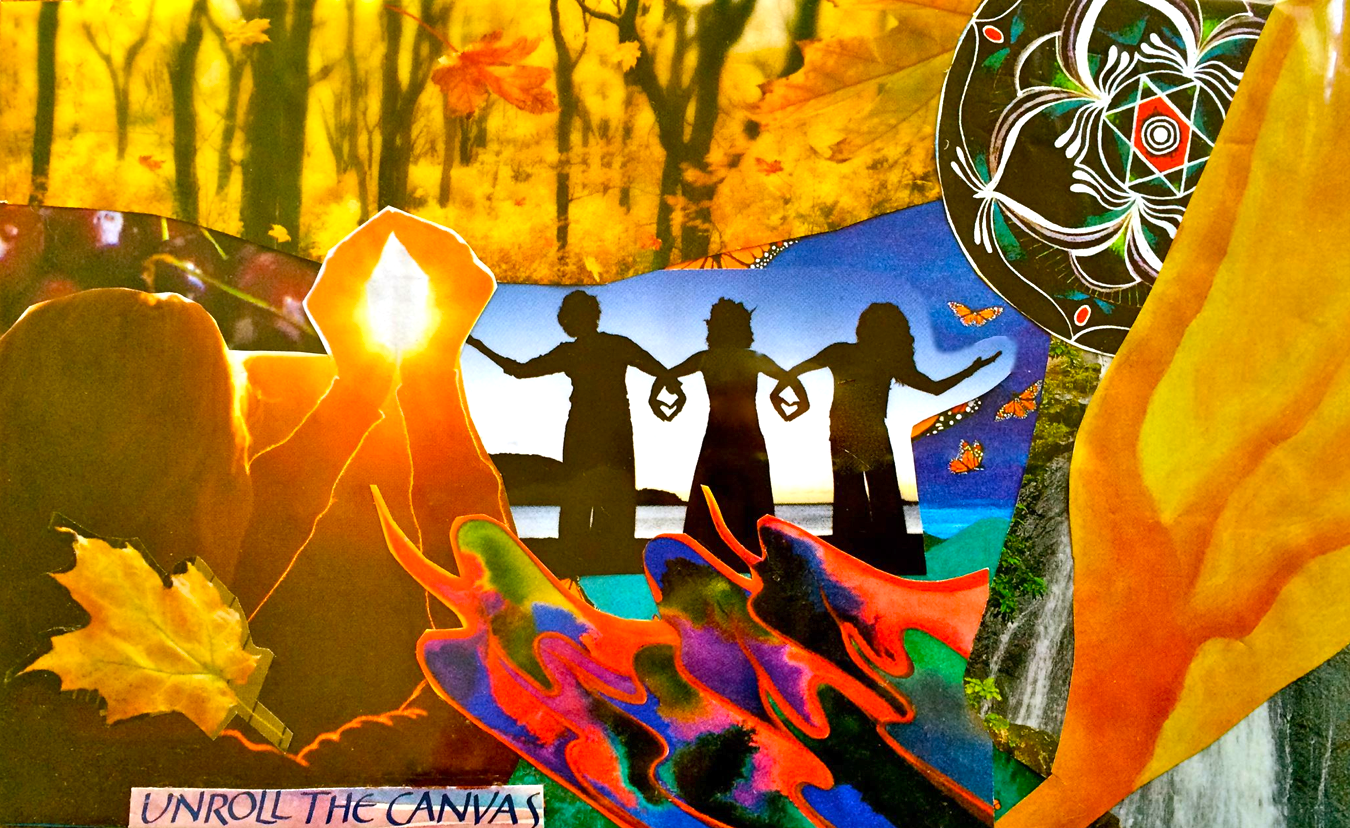
Last year about this time three KRMC friends and I chose words for the year and created vision boards to help us live into the words. Deanna, Nancy, Lindy, and I met one Tuesday morning to begin the process of identifying and clipping magazine photos before arranging them into collages to depict our words.
I'm not typically a ‘word-of-the-year’ sort of person, but ‘unfolding’ found me like this:
In early January of 2015 I read a story explaining that Canadian Mennonites had decided to give congregations the option to choose whether or not they would become open and welcoming in their individual settings. In response to a friend’s question, I replied that I had given up expecting Mennonite Church USA to make a similar response and was instead waiting for an ‘unfolding.’ Even as I wrote the word, I recognized it as my word for the year.
A month later, as I was preparing for a conversation with my spiritual director, I journaled that the word ‘unfolding’ was giving me the “freedom to consider options, to go with the flow, that it had become a lens for viewing my alternatives.” Living with the word ‘unfolding’ for 12 months gave me permission to slow down, to pause, to consider, to mull over incidents, opportunities, decisions, joys, and sorrows that came my way in 2015.
When I look at the collage now, a year after creating it, I see lots of golden light, I see freedom, ways of unfolding that must have been subliminally there but as yet unspoken when the vision board came into being. And that’s the thing about creating space using a discipline like a word for the year…it allows you to find something for which you didn’t know you were looking. It offers room for life to ‘unfold’ at its own pace.
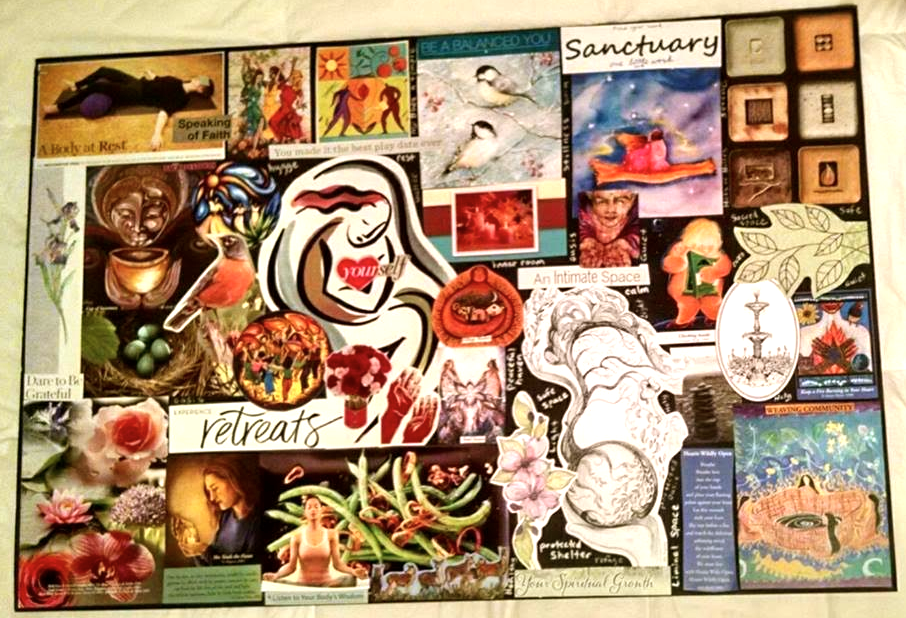
Deanna has embraced the discipline of choosing a word for the year for some time. “Sometimes the word chooses me. I gradually lived into the word ‘balance’ in 2014, as I worked on creating Balance Resource Cards. The word ‘balance’ appeared everywhere, even in my dreams. It became my focus in all aspects of my life….I felt balanced in 2014.”
She has discovered that a theme or intention aids focus at the front end of goal-setting. “Choosing a word for the year helps me decide when to say ‘yes’ and ‘no’ to the many opportunities that compete for my time and attention. I appreciate having my guiding word as a vision for the year.”
Nine months into finding the word ‘sanctuary’ for 2015, Deanna wrote this: “I am creating sanctuary this year in my home and wooded property, so that it is a safe, warm, loving refuge for my work, my relationships, and my inner life. I am also treating my body as a sanctuary for the Divine, which impacts how I care for myself. Sanctuary has been a transformational word for me this year.”
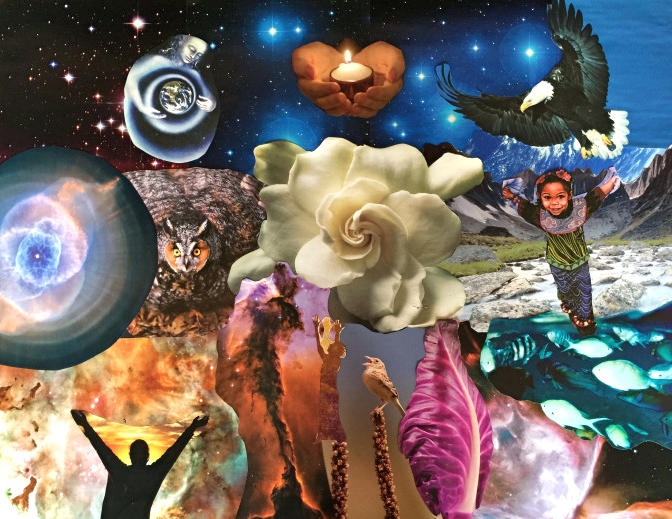
Nancy noticed that ‘joy,’ her word for the year in 2015, “settled on me in a roundabout way that let me know it was not entirely my choice. Joy has begun to work on me in quiet ways, waking me each morning to the good things that lie ahead, showing me the moment-by-moment choice I have between gratitude and worry.”
As she was piecing together her magazine photo montage, Nancy writes in a blog post from last March, “The meaning emerged. Joy is the heartbeat of the Universe echoed in all things and all souls, and joy is participating in that, dancing to it, unfolding and blooming to it, swimming in it.”
Nancy found herself “especially pleased with a trio of images that came together in the lower center, under the gardenia, right to left: a plain little singing bird; a woman with her arms raised in praise or supplication with a third, shadow arm between them (suggesting Divine participation in this); and the actual picture of a solar flare that, positioned in this way, looks like a woman. These images seem particularly harmonious and define, better than words, the joy to which I aspire this year.”
The early arrival in March of her second grandchild prompted this recognition about her word for the year: “Now and then Joy comes together full blast and sweeps you into its vortex, like the swirling gardenia and the sweeping wings of the eagle. The ordinary, everyday, absolutely miraculous birth of a child into your family is this kind of Joy.”
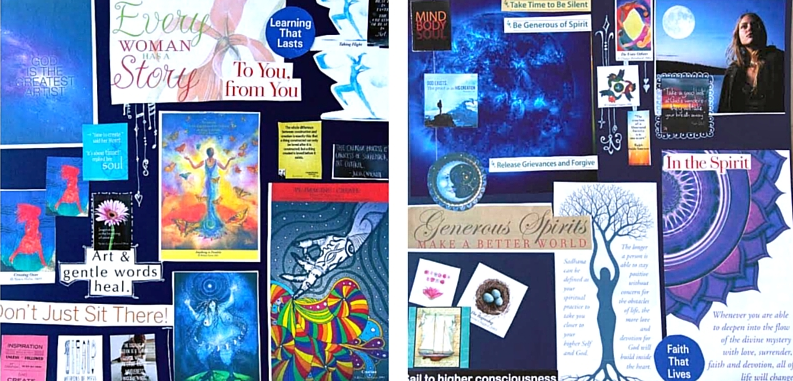
Lindy’s word for 2015 was ‘creation.’ “I liked the duality of the word as it was speaking to me in two areas I felt the need to enhance and focus on in 2015—my experiences and growth in God as our Creator and his creation, as well as my personal artistic journey where I hoped to take my own process of creation to a new level.” (In the depiction above, the personal board appears on the left and the God board on the right.)
Lindy recalls a yearning “to be committed to focusing on this word with expectations that I will learn and grow throughout the year.” Her year did, indeed, take unexpected twists and turns as her mother suffered health issues that led to Lindy’s offering care and often taking her away from home. “During this time, my word was certainly with me, especially as I spent five weeks going through long days of rehab with my mother. My two-hour daily drive became a respite, and I began taking my camera to capture the beautiful sunsets and cloud formations which I felt were God’s little paintings, created in the sky just to comfort me.”
Lindy’s mother’s stroke left her with both physical and mental challenges. Rehab offered tools from five therapists and acted as the stage for ‘creation’ of a new normal for her mom and the family, according to Lindy. “Time and patience became our friends. Working closely with the therapists and neurologists as they explained what the damage was and how the brain can sometimes re-learn certain things was both fascinating and amazing. God’s creation, in the human body, was being revealed to me in a way I would have rather avoided, but allowed me to see life, the ultimate creation, with a new appreciation from a deeper perspective.”
Lindy’s word ‘creation’ “also impacted me personally as I worked to create a healing, safe, helpful environment for my mother to continue her journey at home. Both my mother's strength and my own were tested time and time again as this health crisis created a new dimension within our mother-daughter relationship.”
Sometimes resolutions and goals set at the start of a new year leave those who craft them feeling defeated within a month or two. My friends and I discovered that our words for the year continued to be life-giving 12 months in. My experience was so fruitful, in fact, that I’m considering keeping my word for a second year.
Have you experimented with choosing a word for the year to help clarify your vision for 2016?
Add a commentJanuary 18, 2016
by: Jane Bishop Halteman
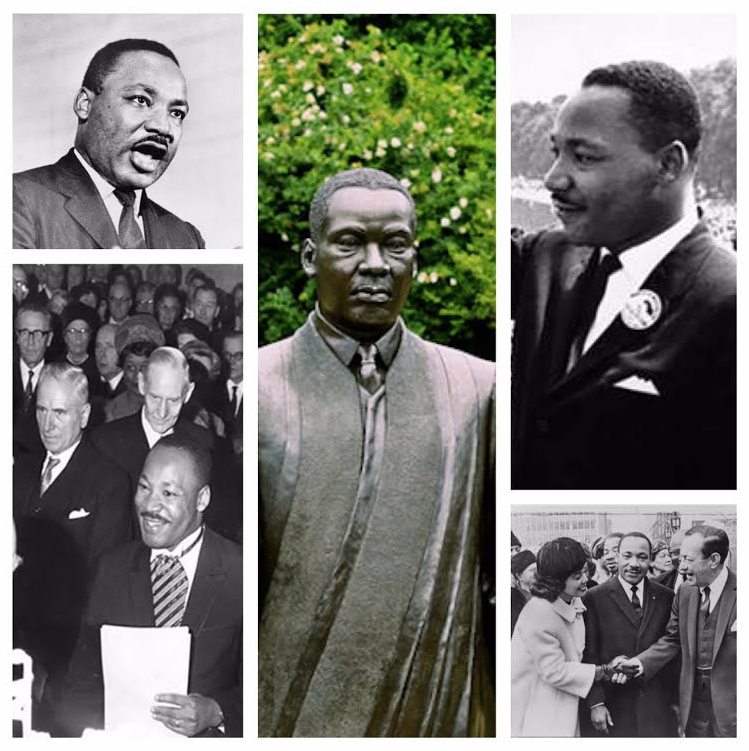
Today, the third Monday in January, was proclaimed a national holiday in 1983 to honor civil rights leader Martin Luther King Jr., though the day was not observed until 1986. Not until the year 2000 did all states become actively involved in the celebration.
Taking a serious look at service to make the world a better place for the poor and powerless is one of the best ways to honor the memory of King, a Baptist pastor, on this day and throughout the year, according to his late wife, Coretta Scott King.
She says this on the meaning of the King holiday: “On this day we commemorate Dr. King’s great dream of a vibrant, multiracial nation united in justice, peace and reconciliation; a nation that has a place at the table for children of every race and room at the inn for every needy child. We are called on this holiday, not merely to honor, but to celebrate the values of equality, tolerance, and interracial sister and brotherhood he so compellingly expressed in his great dream for America.”
But the day is not only for celebration and remembrance, education and tribute, she continues. “All across America on the holiday, his followers perform service in hospitals and shelters and prisons and wherever people need some help. It is a day of volunteering to feed the hungry, rehabilitate housing, tutor those who can’t read, mentor at-risk youngsters, console the broken-hearted, and a thousand other projects for building the beloved community of his dream.”
How does Martin Luther King Day inspire us to make a difference? Where do we see the glimpses of healing and hope for which Martin Luther King yearned? We are all familiar with some of his quotes (see below), but how are we getting involved with helping to bring his dream to some small fruition?
- “The ultimate tragedy is not the oppression and cruelty by the bad people but the silence over that by the good people.”
- “Darkness cannot drive out darkness: only light can do that. Hate cannot drive out hate: only love can do that.”
- “Everybody can be great...because anybody can serve. You don't have to have a college degree to serve. You don't have to make your subject and verb agree to serve. You only need a heart full of grace. A soul generated by love.”
- Said in a speech at a victory rally following the announcement of a favorable U.S. Supreme Court Decision desegregating the seats on Montgomery's busses: “The end is reconciliation; the end is redemption; the end is the creation of the Beloved Community. It is this type of spirit and this type of love that can transform opponents into friends. It is this type of understanding goodwill that will transform the deep gloom of the old age into the exuberant gladness of the new age. It is this love which will bring about miracles.”
We frequently see compassionate responses throughout the world following traumatic or destructive national or global events. Mass shootings and violent weather in other places cause us to awaken to needs in our own communities. Sometimes becoming aware of the voice of a prophet like King fills us with the courage and desire to reach out beyond ourselves.
Our denomination’s seven priorities include “undoing racism and advancing intercultural transformation. This priority reflects our intent to dismantle individual and systemic racism in our church, develop intercultural competence, heal racial divisions, and value all the gifts of God’s diverse people.”
In our local setting, we see KRMCers involved in serving through Hope Ministries, the St. Peter Claver Catholic Worker and its drop-in center Our Lady of the Road, and a host of other efforts including our congregation’s projects through Cana Community in the Near Northwest Neighborhood and our Immigration Ministry’s outreach efforts.
How have you tapped into existing opportunities for service? What moves you to get involved? Recount in your mind’s eye the times and places when you have responded to another’s deep need, either as an individual or with a group, in an informal effort or an organized one.
Where might you choose to become move involved, extending yourself by listening or taking action to make life better for the other? How can you reach out to build bridges and the “beloved community” of King’s dream?
Check out these links for more reading related to Martin Luther King’s dream: Wayne Baker's five-part series, published in 2013, reveals the disparities between the races based on Pew Research Center findings. Read the Spirit shares this link to an interview with Jim Wallace about his new book entitled America’s Original Sin: Racism, White Privilege, and the Bridge to a New America.
(Photos found at site.gov addresses and thus in public domain)
Add a commentby: Jane Bishop Halteman
January 11, 2016
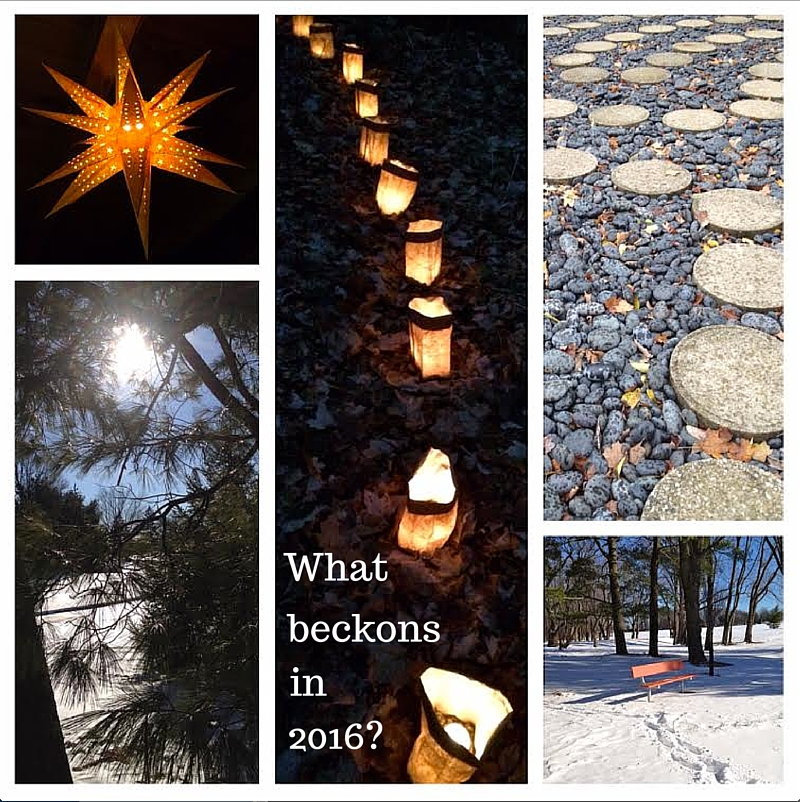
The start of a new calendar year finds us poring over retrospectives and to-do lists, reflecting on clean sweeps and new challenges, taking stock and setting intentions.
Reportedly our cues to look to the future and the past at this time of year date back to Janus, the Roman god of beginnings and transitions after whom the month of January is named. Janus is typically represented as having two back-to-back faces, one looking ahead and one looking behind.
As we confront the next 12 months head on, some of us seek practices and disciplines to evaluate the past and organize the future, hoping to replace what’s superfluous with new goals and challenges. Perhaps ways of operating that once worked for us no longer support the life we want to lead; alternatively, new learnings may beckon us in directions different from those to which we are accustomed.
A simple version of the daily examen offers one way to review the last year. Try bringing to mind the moment from the past 12 months for which you are most grateful and the moment for which you are least grateful. What do you observe as you compare the two? How does that observation inform your readiness to move ahead into 2016?
I love these words from Joyce Rupp about setting intentions for the year in January: “Our life is a journey. We are always ‘on the road.’ Each time another January greets us, we have an opportunity to pause, to see where we have been, to notice how far we have come, and to ponder how that journey has been for us. Each new year is also a time to clear our vision, to take stock of our resources, and to refresh our dreams as we set out once more on the journey that is ours.”
Rupp further suggests that the start of a new year is a good time to identify the people, places, events “that blessed us, affirmed us, enlivened us, and enriched us” even as we notice the “situations that challenged us, tested us, discouraged us, or maybe even tried to destroy us.”
And as we assess the past year, Rupp adds that we also might ponder our present situation. “What are our inner resources? Do we need to refuel, to restore our energies? Are we prepared to continue on the road? Have our spiritual suitcases worn thin with all the clutter we’ve stuffed into them along the way? What kind of nourishment will we provide for ourselves as we travel? Are we moving too slowly or too quickly? Are we aware of the people who are on our roads? Do we stop to meet them, listen to them, learn from them?”
Where are you headed in 2016? What will guide you? Some of us choose a word for the year or make resolutions to help steer the course. Some set new goals and challenges, take up new disciplines or practices. Some, who find sufficient comfort in the idea of a clean slate and starting fresh, manage to go with the flow and remain open to whatever comes.
If you are not inclined to declare your own intentions for 2016, consider these recommendations made by Pope Francis at the start of 2105: create time for others, meet the poor “in the flesh,” befriend those who disagree, make it a habit to “ask the Lord,” be happy.
David Whyte’s poem, featured here in this Parker Palmer Facebook post, promises that “inside everyone is a great shout of joy waiting to be born.” Why not accept the challenge in 2016 to find your great shout of joy?
Add a commentby: Jane Bishop Halteman
January 4, 2016
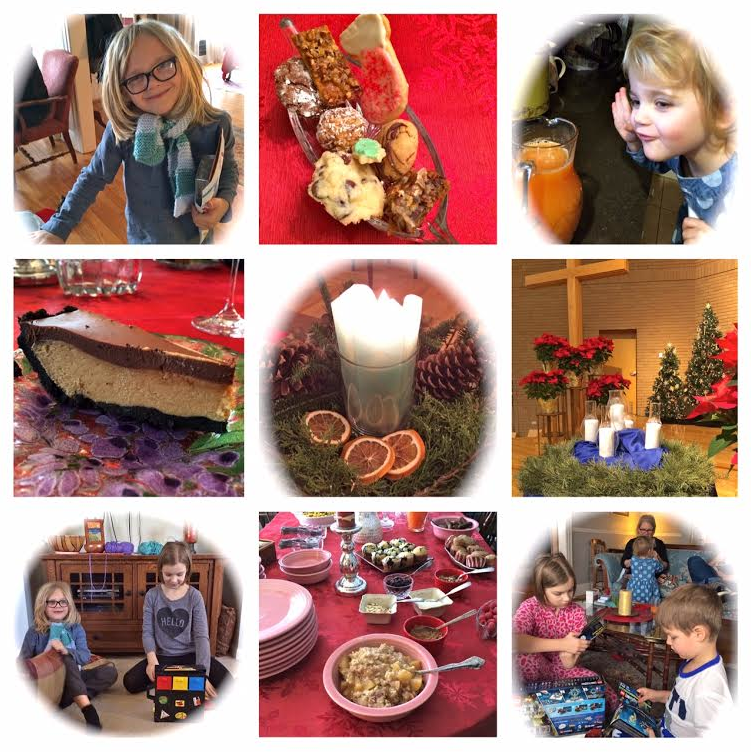
Proponents of the liturgical year make it quite clear that Christmas is a season, not just a day. Despite what American culture seeks to dictate, Christmastide lasts 12 days, from the Feast of the Nativity on December 25 through the Feast of the Epiphany on January 6.
This year our family exchanged Christmas gifts on January 2, by which time our consumerist society was already promoting Valentine’s Day with in-store displays. The wrapping paper specials I like to stock up on for next year’s holiday packages were well picked over a day or two after Christmas, and by December 28 all signs of post-Christmas bargains had disappeared at the shops I frequent close to home.
Christmas, the day, was definitely behind us, and I was feeling a bit lackluster about trying to hang on to the spirit while we waited for our family celebration. It was with great delight, then, that I watched Christmas take place in many tiny ways during our get-together, which clocked in at just over 24 hours.
I heard Christmas happen as our 7-year-old grandsons played games together with great hilarity, as our 3-year-old granddaughter screamed in delight at her grandfather’s crazy antics, when that same 3-year-old said, “Bani, don’t juice without me!”
I chuckled at the specter of Christmas when the realist 7-year-old assured the fantasy-loving 7-year-old that the fantasy-lover was NOT Homer Simpson; I witnessed Christmas again when the family amicably agreed to forgo our traditional cinnamon buns because the baker was out of steam and none of us needed one more calorie.
I saw Christmas reflected in the appreciation one of the 7-year-olds expressed as he proudly modeled the scarf our 10-year-old granddaughter knitted as a gift for him, and I observed Christmas yet another time as the adults drank in the children’s magic show using playthings from their parents’ childhoods.
“Christmas is the way God comes to us,” preaching pastor Janice declared yesterday in her sermon.
We all know the story of the baby in the manger, but how does that story play itself out in our lives? Where do we see Christmas happening in down-to-earth, ordinary ways on the home front? Sometimes we just forget to name the smallest of happy moments as Christmas revealing itself over and over again.
Soon the Advent wreath, nativity scene, and lighted trees will disappear from the front of the sanctuary; Christmas cookies and desserts will be gone from our tables and the trappings of the holidays packed away, but the season’s official end is no reason to stop looking for signs of “the way God comes to us.” I urge you to keep track of your personal Christmas sightings all year long!
Add a commentby: Jane Bishop Halteman
December 28, 2015
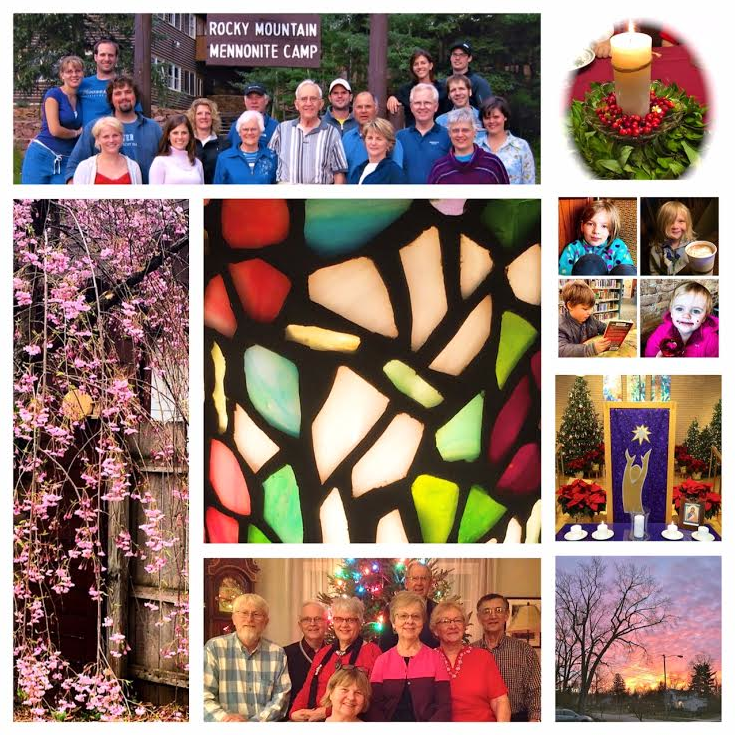
What are the best gifts you’ve ever received…at Christmas or any other time of the year? Depending on our personality types, of course, we’ll have different takes on what qualifies as a good gift, but the passing of 2015 seems an appropriate time to take stock of the things for which we are grateful this past year.
Maybe even a good opportunity to back up even farther than these last 12 months to take a longer view! No matter what your age, comb through your memory to find the stuff of life that has made you happy over the years. What experiences, incidents, encounters, happenstances do you recall with the greatest clarity or measure of gratitude?
One physical gift I remember with great fondness came from Jim many years ago. Brightly colored shards of the small mosaic glass lamp he gave me reflect light beautifully and mysteriously. A tight shot of the lamp appears in the center of the photo collage that accompanies this post.
That glowing central image anchors the photos around it of life experiences that continue to warm me: extended family interactions, long-term friendships, involvement with grandchildren in the last 10 years, and the ever-heartwarming beauties of nature and other places I notice the Divine.
Many people have made a difference in my life: professors who helped me find a profession, pastors and contemplative friends and spiritual directors who have modeled a spirituality I find compelling, parents who raised me well and have allowed me to journey with them into old age, our children and their spouses who invite me to spend quality time with their children and continue to challenge us in positive new directions.
Treasured gifts of experience and endurance come to mind as well. Our son-in-law gave the women in our family (his wife and daughter, our daughter-in-law, and me) a Women’s Day Out gift one Christmas, which we experienced together on a warm April day with trips to Peter Pan, a pleasant coffee shop, our favorite lunch spot, and a nail salon. What an extravagant, pleasurable, memorable day of togetherness that gift offered. And the warm memories continue…
Last Mother’s Day the family surprised me with a landscape design plan, which was installed this past fall; it has afforded me much pleasure already as I have watched it come to be and as I anticipate seeing it change and grow in the future.
Jim’s long-term employer gave us the opportunity to travel together as a family every other summer when our children were small as he took students on trips to Europe. That gift gave then and it continues to give now as we still love travel and exposure to cultures other than our own.
Twice in my life I have met quite unexpectedly people who have become important to me in life-changing ways. When our daughter went to Belfast for nine months with Mennonite Mission Network between high school and college, she began second-guessing her decision, so that I found it difficult to leave her after spending 10 days helping her get settled.
By happenstance (or more likely Providence), I met a couple from Belfast in the Dublin airport as they were headed for Boston and I was returning to the USA. They invited me to airport tea and inquired about my business in Northern Ireland. Upon learning that Meg would be staying in Belfast until June, they committed to making a connection with her on their return from Boston.
I believed that they would, though my family teased me about the airport pickup and wondered why I expected them to keep their promise. Nearly three months passed before we learned that they had, indeed, made a connection. No amount of looking for the organization she was with had produced results for quite some time, but one night on an unseasonably warm walk to dinner that December, they passed an open outer office door which listed the names of organizations lodged there, including the one where Meg was a volunteer. They inquired of a doorman whether or not an American girl worked there and made contact soon after. Their care for her was the best gift that holiday season, and one that I have been grateful for over and over these past 15 years.
In the fall of 2009 the gift of another important connection came to me, again with no orchestration on my part. As a 16-year-old, I lost a boyfriend in a truck accident and 12 years later my 18-year-old brother died in a car crash. I did not do sufficient grief work around either of those painful deaths, but, miraculously, incentive to unearth that old pain arrived with a most unexpected crossing of paths with my boyfriend’s younger brother, whom I did not recall.
We found a way to walk that journey together and eventually were able to recommend that our high school establish a memorial garden to remember our brothers, other students who died before graduation, and all alumni no longer living. Not only did we plan and execute a worship service and dedication event for the garden, but I was able to introduce my high school classmates to the space, where we shared a variety of personal griefs and losses at our 50-year reunion in the fall of 2014.
I am grateful for all these good gifts and I would love to hear about yours. Tell me your stories, fellow Kern Roaders, so we can share them as future blog posts here at Glimpses of Healing and Hope!
Add a comment
